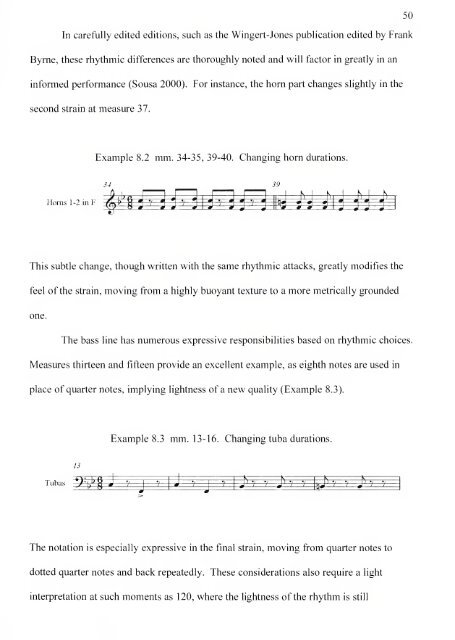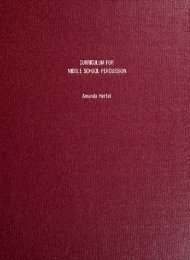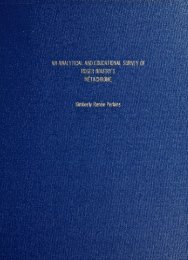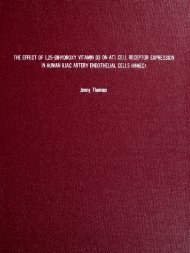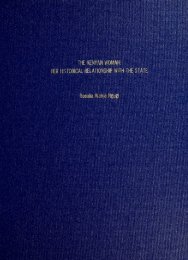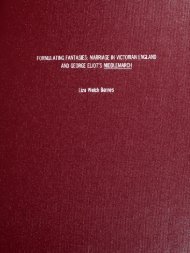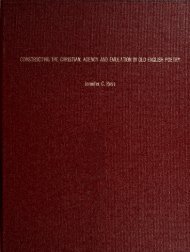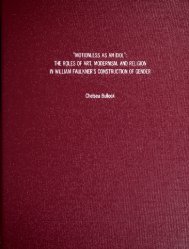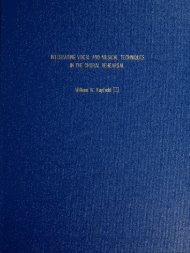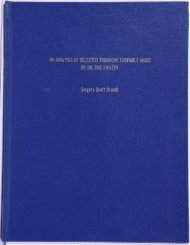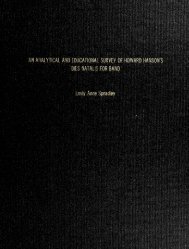The Study and Application of Rhythmic Analysis for Wind Band ...
The Study and Application of Rhythmic Analysis for Wind Band ...
The Study and Application of Rhythmic Analysis for Wind Band ...
Create successful ePaper yourself
Turn your PDF publications into a flip-book with our unique Google optimized e-Paper software.
In carefully edited editions, such as the Wingert-Jones publication edited by Frank50Byrne, these rhythmic differences are thoroughly noted <strong>and</strong> will factor in greatly in anin<strong>for</strong>med per<strong>for</strong>mance (Sousa 2000).For instance, the horn part changes slightly in thesecond strain at measure 37.Example 8.2 mm. 34-35, 39-40. Changing horn durations.This subtle change, though written with the same rhythmic attacks, greatly modifies thefeel <strong>of</strong> the strain, moving from a highly buoyant texture to a more metrically groundedone.<strong>The</strong> bass line has numerous expressive responsibilities based on rhythmic choices.Measures thirteen <strong>and</strong> fifteen provide an excellent example, as eighth notes are used inplace <strong>of</strong> quarter notes, implying lightness <strong>of</strong> a new quality (Example 8.3).Example 8.3 mm. 13-16. Changing tuba durations.<strong>The</strong> notation is especially expressive in the final strain, moving from quarter notes todotted quarter notes <strong>and</strong> back repeatedly.<strong>The</strong>se considerations also require a lightinterpretation at such moments as 120, where the lightness <strong>of</strong> the rhythm is still


